No products in the cart.
NEWS
Grow Your Own Orchard in Pots: A Guide to Container Fruit Trees
Transforming your living space with lush greenery and the promise of fresh, home-grown fruit is incredibly rewarding. Container gardening makes this dream accessible, even if you lack a large backyard. Imagine stepping onto your patio or balcony and plucking ripe fruit straight from the branch! Growing fruit trees in pots is a fantastic way to add beauty, fresh produce, and a touch of nature to your home.
Essential Tips for Successful Container Fruit Tree Growing
Cultivating fruit trees in pots requires understanding a few key principles to ensure they thrive and produce abundant harvests. While many varieties can adapt to life in a container, careful selection, proper potting, and consistent care are paramount.
Choosing the Right Fruit Tree Varieties for Pots
Selecting the appropriate variety is the first crucial step. Consider your climate, available space, and personal fruit preferences. Many fruit tree types have dwarf or compact cultivars specifically bred for container growing. These varieties maintain a manageable size without sacrificing fruit production.
Propagation methods also influence a young tree’s suitability for pots. While growing from seed is possible for some fruits, trees propagated via grafting or cuttings are often preferred for containers. Grafted trees, in particular, tend to fruit sooner and maintain desirable characteristics like disease resistance and dwarf size.
Key Considerations When Selecting:
- Space: How much room do you have for the pot? Choose varieties that naturally stay small or are dwarf selections.
- Climate: Does the fruit tree need a certain number of chill hours (cold temperatures) to fruit? Will it tolerate your region’s heat and sunlight?
- Desired Fruit: What kind of fruit do you want to harvest? Research varieties known to perform well in containers.
- Tree Health: Always source healthy, vigorous young trees from reputable suppliers. Inspect for signs of pests or diseases before purchasing.
Selecting the Right Pot
The container you choose significantly impacts your fruit tree’s growth. It needs to be large enough to support the root system as the tree grows and heavy enough to prevent tipping, especially in windy conditions.
Containers made from materials like ceramic, terracotta, plastic, or even fabric grow bags can work. Ensure the pot has adequate drainage holes at the bottom to prevent waterlogging, which can lead to root rot. A minimum diameter of 30-40 cm is a good starting point for many dwarf varieties, but larger pots are generally better as the tree matures.
Preparing the Optimal Potting Mix
The soil (or substrate) in a container is the tree’s sole source of nutrients and moisture retention. Unlike garden soil, potting mix needs to be lightweight, well-draining, and retain moisture. Using standard garden soil in pots can compact easily, restricting root growth and drainage.
It’s best to use a high-quality potting mix specifically formulated for containers, or you can create your own blend. A common and effective mix combines materials like peat moss, compost, pine bark fines, and perlite or vermiculite for drainage and aeration. Incorporating well-rotted manure or organic compost adds valuable nutrients. Ensure your mix is sterilized or processed to be free of pests and diseases.
Step-by-Step Guide to Planting Fruit Trees in Pots
Potting your fruit tree is a straightforward process, but performing each step correctly sets the stage for healthy growth.
- Prepare the Pot: Ensure the pot is clean and has functioning drainage holes. You can place a layer of gravel or broken pottery at the bottom for extra drainage, although a good potting mix and sufficient holes are usually enough.
- Add Potting Mix: Fill the pot about one-third to halfway with your prepared potting mix.
- Remove the Tree from Nursery Pot: Carefully slide or lift the young tree out of its original nursery container. If the roots are tightly circled at the bottom (root-bound), gently loosen them with your fingers.
- Position the Tree: Place the tree in the center of the pot. The top of the root ball should sit about 5-7 cm below the rim of the new pot to allow space for watering.
- Fill with Mix: Backfill the pot with potting mix, gently tamping it down around the root ball to eliminate air pockets. Add mix until it reaches the desired level, keeping the root collar (where the stem meets the roots) at or slightly above the soil surface.
- Water Thoroughly: Water the newly potted tree deeply until water drains from the bottom of the pot. This settles the soil around the roots.
- Initial Placement: Place the potted tree in a sheltered, semi-shady location for the first 5-7 days to help it recover from transplant shock.
- Move to Final Location: After the initial period, move the pot to its permanent location. Most fruit trees require plenty of sunlight – ideally 6-8 hours of direct sun per day – to produce fruit.
Caring for Your Container Fruit Trees
Regular, attentive care is essential for potted fruit trees, as they have limited soil volume and rely entirely on you for water and nutrients.
Pots hold less soil than the ground, meaning they dry out faster and nutrients can leach out more quickly. This requires consistent watering and feeding. Fruit trees are heavy feeders, especially when flowering and fruiting.
Watering Your Potted Fruit Tree
Consistent moisture is key, but avoid overwatering. The frequency depends on the weather, pot size, and the specific tree’s needs. In hot, dry weather, daily watering might be necessary. In cooler, wetter conditions, less frequent watering is needed.
Check the soil moisture by sticking your finger about an inch or two into the mix. If it feels dry, it’s time to water. Water deeply until you see water coming out of the drainage holes. The best times to water are usually early morning or late evening to minimize evaporation. Aim to keep the soil consistently moist, like a wrung-out sponge, not waterlogged or bone dry.
Pruning and Shaping
Pruning is vital for container fruit trees. It helps maintain a manageable size and shape, improves air circulation, removes dead or diseased wood, and encourages better fruit production. Prune during the dormant season (winter) or after harvest, depending on the specific fruit type.
Focus on removing any crossing or inward-growing branches, weak or damaged limbs, and suckers (shoots growing from the base or rootstock). Shaping helps create an open structure that allows sunlight to reach all parts of the tree. Removing older, less productive branches makes way for new growth and fruit spurs.
Pest and Disease Management
Container fruit trees are sometimes less susceptible to soil-borne diseases than in-ground trees because they are isolated. However, they can still attract common pests. Regularly inspect your tree’s leaves and branches for signs of trouble.
For pest and disease control, prioritizing organic or biological methods is recommended, especially for edible plants. Introduce beneficial insects, use insecticidal soap or neem oil for minor infestations, and ensure good air circulation through proper pruning to prevent fungal issues. Healthy, well-cared-for trees are naturally more resistant to pests and diseases.
Top 15 Fruit Trees Perfect for Container Growing
Many popular fruits can be successfully grown in pots, bringing the joy of harvesting right to your doorstep. Here are 15 excellent choices:
1. Guava
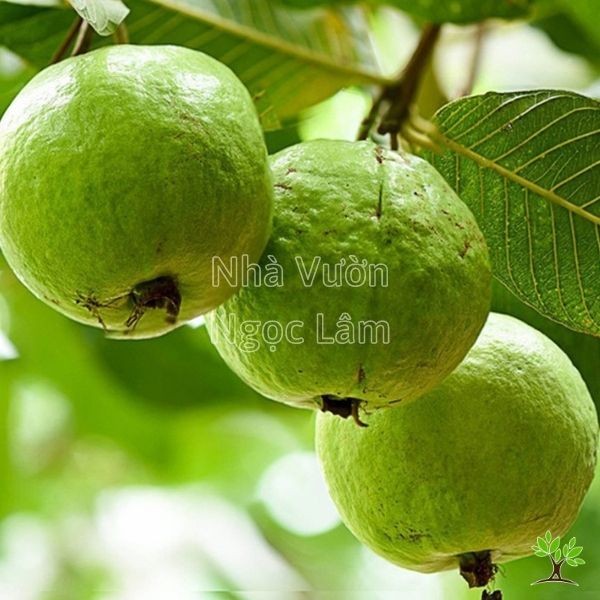 Close-up view of vibrant green guava fruit hanging from a branch on a potted tree.
Close-up view of vibrant green guava fruit hanging from a branch on a potted tree.
Guava is a fantastic option for containers, known for its ease of growth and reliable fruiting. These trees are relatively compact and adapt well to pot life. They produce delicious, fragrant fruit packed with vitamins. Provide plenty of sunlight, regular watering, and well-drained soil for best results. Loosening the soil periodically around the base helps improve aeration.
2. Pomegranate
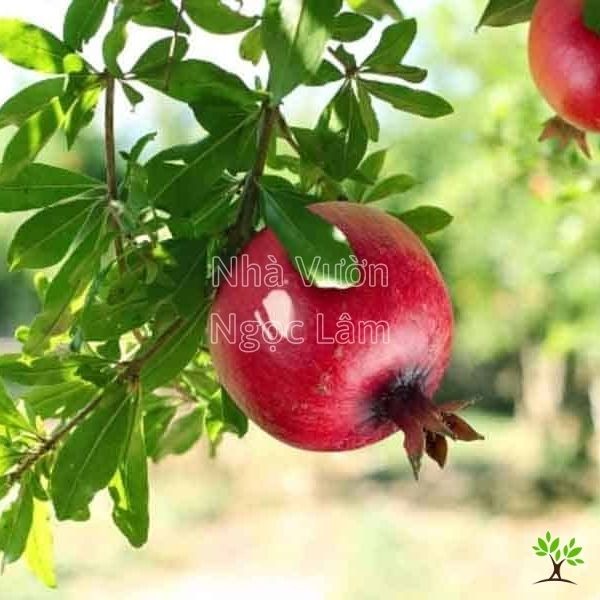 Several round, reddish-orange pomegranates ripening on the branches of a small, leafy tree in a container.
Several round, reddish-orange pomegranates ripening on the branches of a small, leafy tree in a container.
Pomegranate trees are popular for containers due to their attractive form, quick fruiting, and relatively fast growth. They have slender stems and delicate leaves, forming a lovely decorative plant. Pomegranates are sun-lovers and produce fruit resembling small lanterns that turn vibrant red or yellow when ripe. The fruit is not only beautiful but also rich in vitamins and antioxidants, perfect for healthy eating or juicing. They are drought-tolerant once established but benefit from consistent moisture in pots.
3. Star Fruit
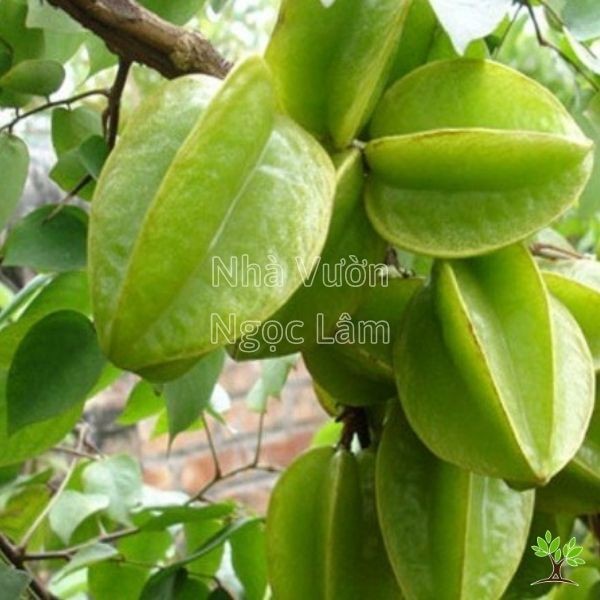 Several green, unripe star fruits with distinct ridges hanging from a branch of a small potted tree.
Several green, unripe star fruits with distinct ridges hanging from a branch of a small potted tree.
Beyond being a refreshing and delicious fruit, star fruit (carambola) trees make attractive potted plants. They are well-suited for container growing, especially dwarf varieties. Star fruit trees prefer partial shade rather than intense, direct sunlight, which can sometimes affect the fruit’s sweetness. The fruit contains beneficial vitamins and is known for its potential to help with allergies. It’s excellent for eating fresh or adding to salads and savory dishes.
4. Walnut
 A cluster of green walnuts encased in their hulls hanging on a tree branch, likely a young or compact variety suitable for larger containers.
A cluster of green walnuts encased in their hulls hanging on a tree branch, likely a young or compact variety suitable for larger containers.
While full-sized walnut trees are immense, some compact or columnar varieties might be considered for very large containers or specific growing conditions. Walnut trees are valued for their nutritious nuts, known for improving brain health and potentially preventing heart disease and certain cancers due to their rich nutrient profile. They typically prefer deep, fertile, well-drained soil. Regular watering is important, perhaps 2-3 times per week depending on conditions. Growing walnuts in pots is a more challenging endeavor than smaller fruits and requires a significant commitment to pot size and care.
5. Blueberry
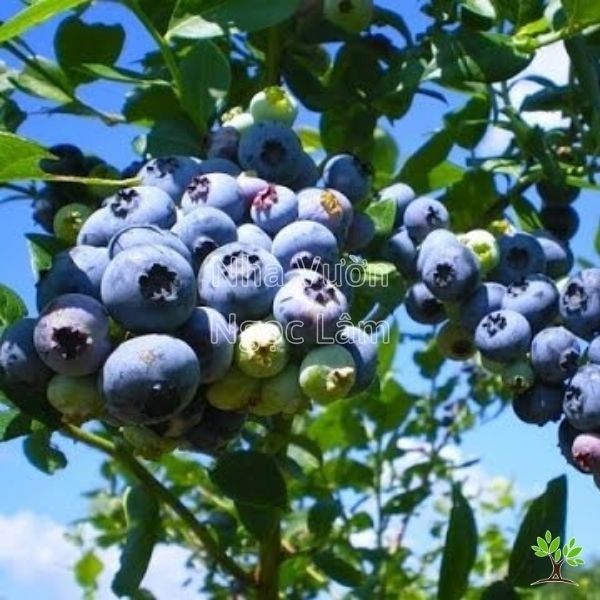 Clusters of plump, blue blueberries hanging from the branches of a small, leafy shrub in a pot.
Clusters of plump, blue blueberries hanging from the branches of a small, leafy shrub in a pot.
Blueberries are highly recommended for container growing, especially because they require acidic soil, which is easier to control in a pot than in the ground. These shrubs are productive and visually appealing. Regularly eating blueberries is linked to improved memory and maintaining a healthy weight. Planting several varieties can improve pollination and yield. They need consistent moisture and a sunny spot.
6. Tomato
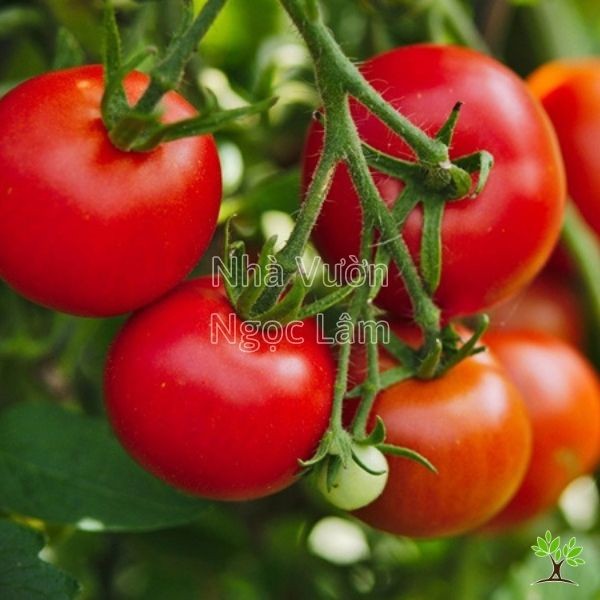 A small tomato plant in a pot laden with round, red cherry tomatoes ready for harvest.
A small tomato plant in a pot laden with round, red cherry tomatoes ready for harvest.
Often treated as a vegetable in the kitchen, the tomato is botanically a fruit and is exceptionally well-suited to container gardening. Potted tomato plants with their bright red fruits add a cheerful splash of color to any space. They offer a light fragrance and a sweet flavor, perfect for salads or eating fresh. Tomatoes are also known for their skin benefits, acne clearing properties, and bone health support due to their vitamin content.
7. Mango
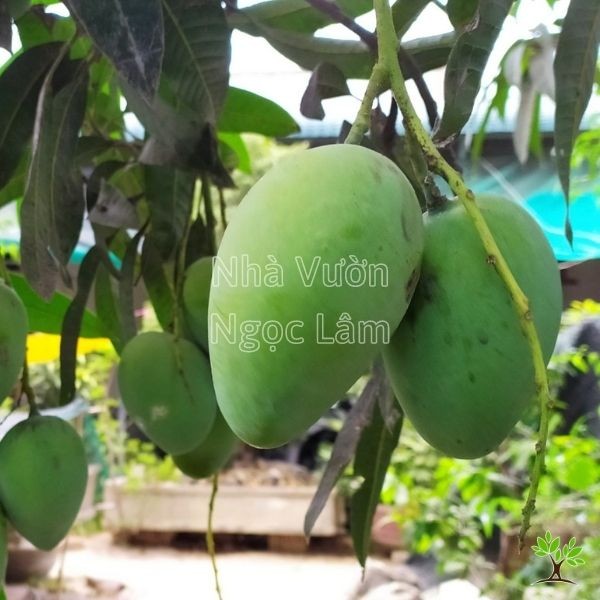 A young mango tree in a pot with several green, developing mangoes hanging from the branches.
A young mango tree in a pot with several green, developing mangoes hanging from the branches.
Many varieties of mango exist, including dwarf or “condo” mangoes perfect for pots. These trees typically remain relatively small and produce fruit quickly. Mangoes are highly nutritious, boosting the immune system and containing vitamins beneficial for eye health. Choose a dwarf cultivar and provide plenty of warmth and sunshine for success.
8. Strawberry
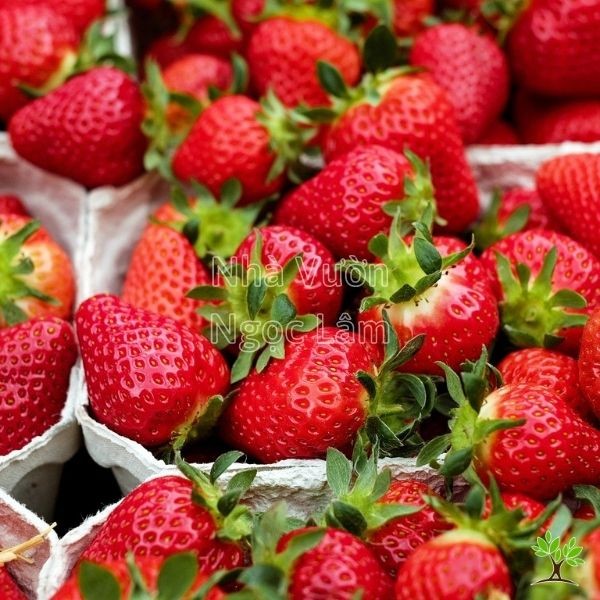 A small strawberry plant in a pot showing green leaves, white flowers, and several red, ripe strawberries.
A small strawberry plant in a pot showing green leaves, white flowers, and several red, ripe strawberries.
Strawberries are perhaps one of the easiest and most rewarding fruits to grow in containers, baskets, or specialized strawberry pots. Their sweet-tart flavor is a delight, and they require minimal space. Strawberry plants are relatively low maintenance. The fruit provides numerous health benefits. Enjoy fresh strawberries right from your own pot, no need to travel far!
9. Hog Plum (Ambarella)
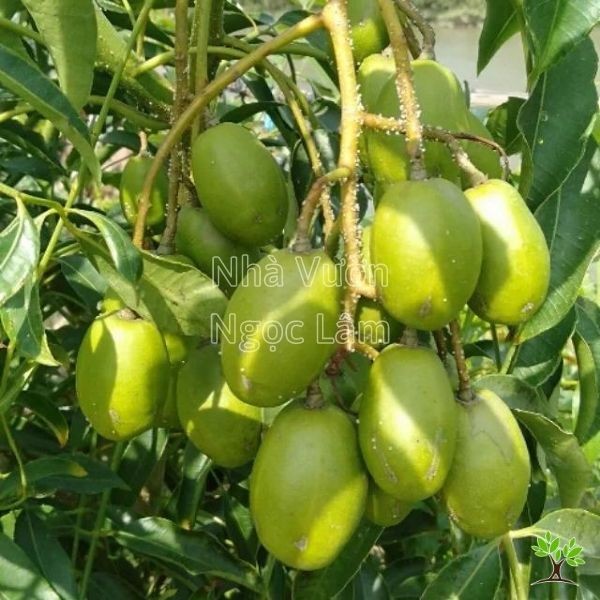 Green, oval-shaped hog plums hanging in clusters on the branch of a potted plant.
Green, oval-shaped hog plums hanging in clusters on the branch of a potted plant.
If you’re looking for a container fruit tree with a quick turnaround, hog plum (also known as ambarella) is an excellent suggestion. These trees typically have a compact size ideal for pots. The fruit is crunchy and often eaten unripe, having a tangy flavor without being fatty. Hog plums can often produce fruit within 3-4 years of planting. After harvesting, pruning back older branches encourages new growth and subsequent fruiting.
10. Lemon
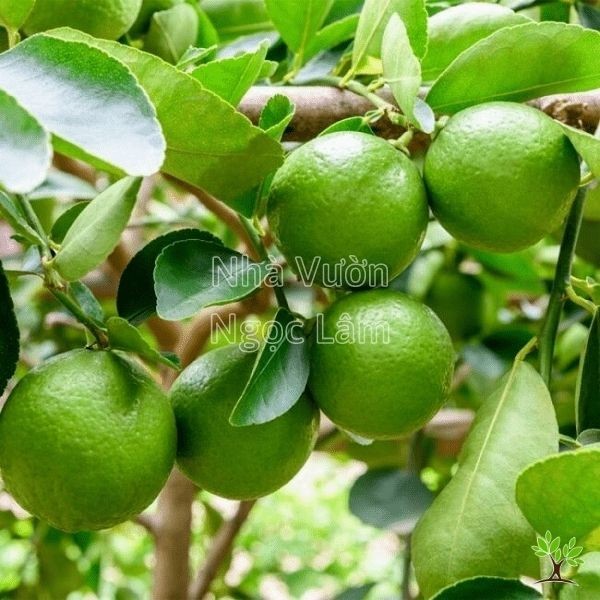 A small lemon tree in a pot laden with bright yellow lemons among dark green leaves.
A small lemon tree in a pot laden with bright yellow lemons among dark green leaves.
Lemon trees are a staple for container gardening, bringing fragrant blossoms and useful fruit. They are generally easy to grow and care for. A single potted lemon tree can provide fresh lemons for daily use. Beyond their culinary uses, citrus trees are known for repelling insects. They thrive in sunny spots.
11. Red Apple
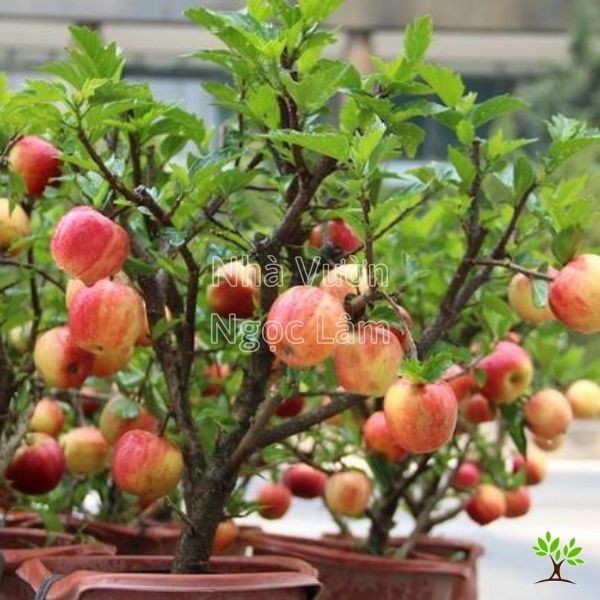 A small, leafy apple tree in a pot with several small red apples growing on its branches.
A small, leafy apple tree in a pot with several small red apples growing on its branches.
Why not grow a red apple tree in your home? Dwarf apple varieties are well-suited for containers, offering attractive foliage and beautiful fruit. With a manageable size, ease of care, and relatively quick fruiting for a tree, a potted apple can add a touch of delight to your space. Ensure you choose a variety suitable for your climate and consider pollination needs (sometimes a second compatible variety is needed, even for dwarf types).
12. Chilli Pepper
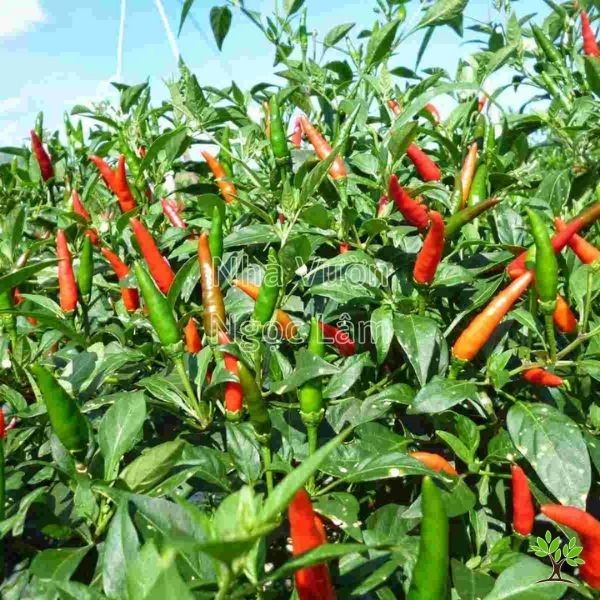 A small potted chilli pepper plant covered in numerous red and green chilli peppers at different stages of ripeness.
A small potted chilli pepper plant covered in numerous red and green chilli peppers at different stages of ripeness.
While technically a fruit, chilli peppers are used as a spice or vegetable. They are incredibly easy and productive to grow in pots. Chilli plants come in many varieties with varying heat levels. Chillies offer several health benefits, including providing vitamins and potentially improving metabolism. Adding a small potted chilli plant to your collection is a practical and rewarding choice.
13. Tamarind
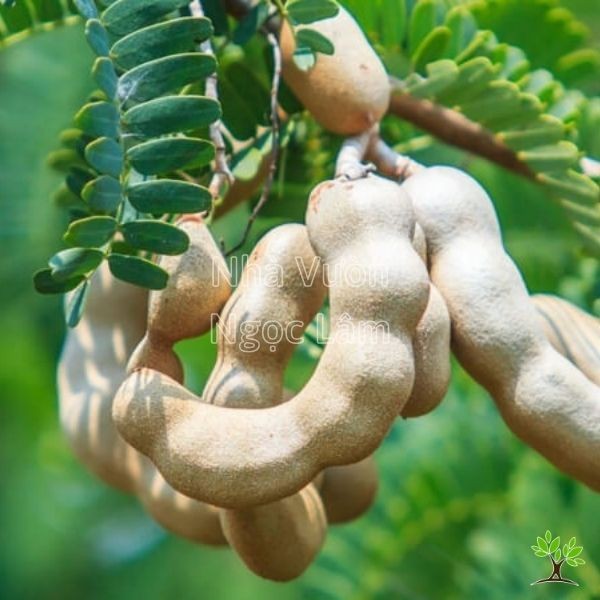 A small tamarind tree in a pot showing delicate green leaves and developing pods.
A small tamarind tree in a pot showing delicate green leaves and developing pods.
Tamarind pods are used in cooking for their tangy pulp, making sauces, jams, and snacks. A small tamarind tree in a pot can be a beautiful addition to your space and provide this versatile ingredient right at home. Tamarind trees are available in sour and sweet varieties, allowing you to choose based on your culinary preferences.
14. Pomelo (Grapefruit/Citrus Maxima)
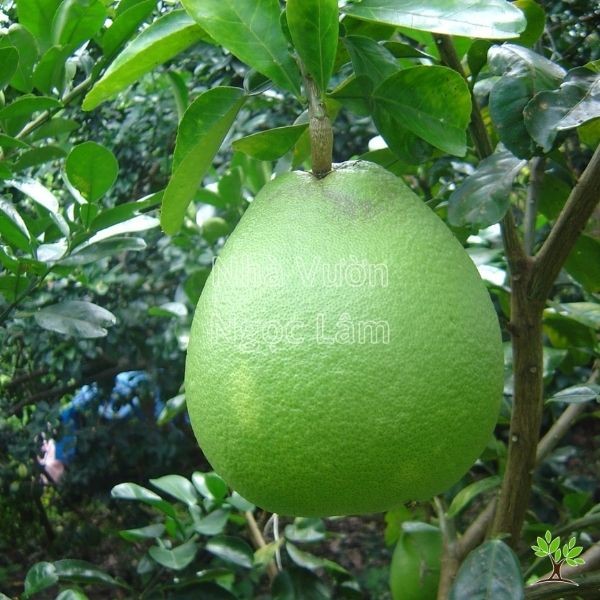 A small, leafy pomelo tree in a pot with a large, round, green pomelo fruit hanging from a branch.
A small, leafy pomelo tree in a pot with a large, round, green pomelo fruit hanging from a branch.
Certain citrus species, including dwarf varieties of pomelo (a large citrus fruit closely related to grapefruit), can be successfully grown in large containers. Besides yielding fruit and acting as an ornamental plant, pomelo leaves and flowers contain essential oils that can add a pleasant fragrance to your home. While demanding consistent care, growing a pomelo in a pot is achievable with attention to watering, feeding, and sunlight.
15. Orange
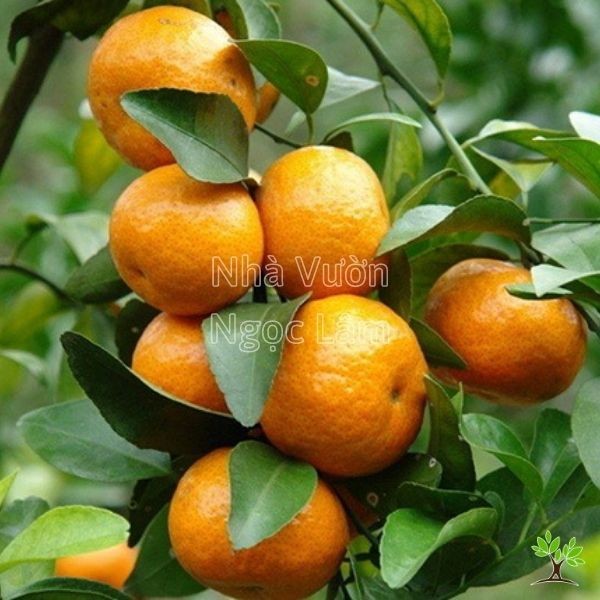 A small orange tree in a pot covered in numerous small, green oranges.
A small orange tree in a pot covered in numerous small, green oranges.
Orange trees are perhaps one of the most popular choices for container fruit, known for their abundant fruiting and relatively easy care. Dwarf orange trees grow quickly and produce many fruits. Oranges are renowned for being packed with Vitamin C and other beneficial nutrients, making them excellent for health. They thrive in sunny conditions and appreciate consistent watering and feeding.
Conclusion
Growing fruit trees in pots is a rewarding endeavor that brings fresh produce and vibrant greenery to your home, regardless of garden size. By selecting the right varieties, providing appropriate containers and soil, and committing to consistent care through watering, pruning, and pest management, you can enjoy bountiful harvests from your own mini-orchard.
Experiment with the varieties listed above to find the perfect fit for your space and climate. Start your journey today and experience the joy of harvesting your own fresh fruit! Explore the range of plant care products and advice available to support your container fruit tree success.



